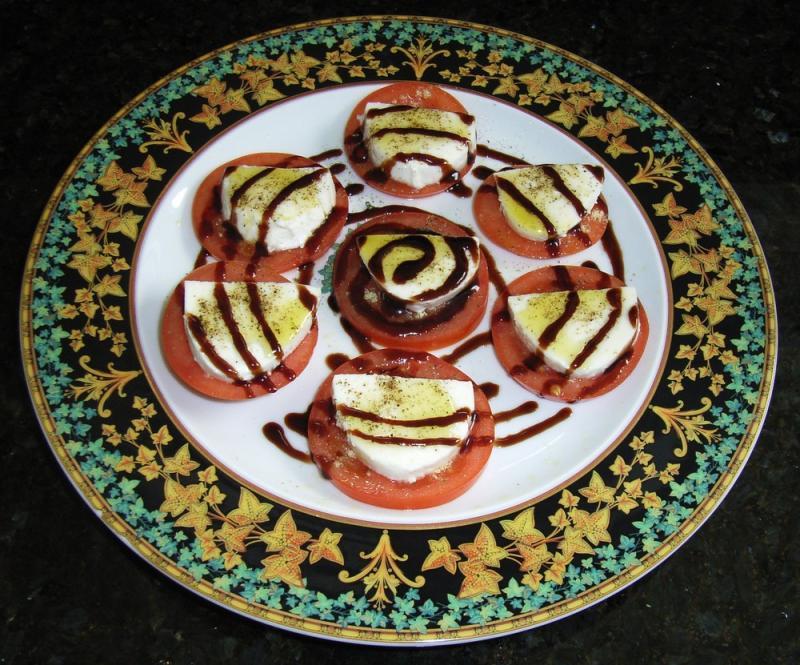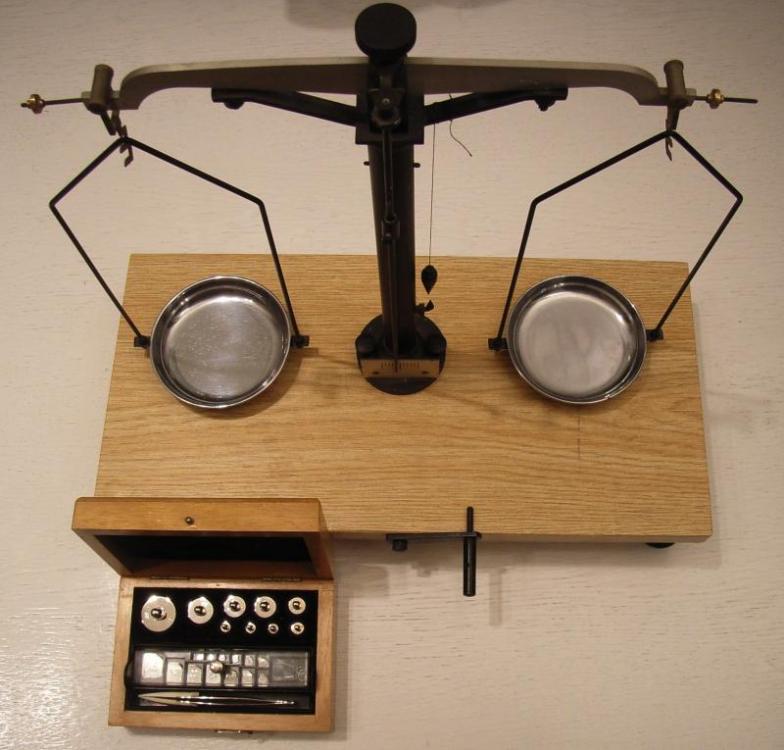-
Posts
518 -
Joined
-
Last visited
Content Type
Profiles
Forums
Store
Help Articles
Everything posted by PedroG
-
Todd: What was in the bag besides the salmon? What was the thickness/time/temp. of the first cooking before chilling? How much vacuum did you apply (chamber? clamp? ziploc?).
-
I have to admit that after 48h stability had changed from ±0.04°C to ±0.05°C. Still better than absolutely necessary.
-
70mm is for a slab. Most often meat of more than 70mm thickness will rather be something like a cylinder or between cylinder and sphere. Douglas Baldwin has published a table "APPROXIMATE HEATING TIMES FOR DIFFERENT SHAPES" taking into account the geometrical factor. So with a cylindrical cut of meat, thickness may be up to at least 100mm, and for an almost spherical cut it might even be 120mm. Whole animals like turkeys would in fact lend themselves to be skewered on a heat pipe skewer. But how would this be vacuum-sealed?
-
Congratulations! GBP 100 for an immersion circulator is a real bargain, and I agree that a ±0.3°C temperature swing (or even a ±1°C swing) will probably affect your end-product much less than the quality of the raw material. Temperature swings in the surrounding medium are attenuated within the food, see here and here. Nevertheless it is recommended to check your bath temperature with a calibrated thermometer for food safety considerations, see the sous vide page in wikiGullet and the article Importance of temperature control on pasteurizing times.
-
That sounds great! But I guess your 220V/2000W heater will heat with 500W at 110V (P = U²/R).
-
When you compare the SVM/FMM system with the LFP-SV2000 "immersion circulator", please note that the LFP-SV2000 specifies stability ±0.3°C which according to an e-mail from www.sousvide.eu might be at best ±0.1°C under optmum conditions (PID-parameters are factory-set and cannot be changed), whereas SousVideMagic specifies "with appropriate PID settings, water bath stability better than ±0.1°C may be achieved", but in fact my SVM/FMM is just now cooking a hanger steak and three cuts of brisket for 48h at 55.54-55.62°C, i.e. ±0.04°C (that's a stability we might expect from an immersion circulator), see also my last post in the old SV-topic.
-
BTW if you cook to pasteurizing conditions and chill rapidly in ice-water, you may even not need to freeze. If you can set your fridge below 2.5°C you may keep your pasteurized meat for 90 days, see Douglas Baldwin's Guide.
-
From a practical point of view I would follow stragegy 1) for tender meat and strategy 2) for tough meat so you have all the 48h-cooking in one batch.
-
-
I agree, basic PID controllers cost much less. Why do you never use the built-in timer of your circulator? Do you prefer a manual approach? My SV rigs (a SVM/FMM and a SVM with a VEGA stockpot) reside downstairs in the air-raid-shelter for lack of room in the kitchen. So I would not hear an alarm-timer built into the PID-controller. For a 48h cooking I do not need a timer, it does not matter if it's 46h or 52h. And for short-time cooking it's not needed either, I always label my bags with the thickness and the time needed according to Douglas Baldwin's tables which I integrated into my thickness ruler (see somewhere upthread), and I drop the food into the bath sufficiently in advance, an hour more will not matter. A timer that would shut off your bath would be dangerous, it would let your food drift down into the danger zone for an uncontrolled time.
-
You might as well get a separate digital thermometer with a needle probe, preferably a NIST or ISO calibrated one, allowing you to check the accuracy of your SVP and SVS and other thermometers.
-
Artificial aging / turbo aging / hot aging In a post upthread there are links to earlier posts on the subject. My first PID-controller was a 6-segment-programmable Model 1500A from FreshMealsSolutions, which makes turbo-aging easy. I guess FMS have discontinued this model, but the Auber WS-1500ELPM seems to be similar. I doubt whether it is worthwhile spending more money for this multi-step-programmability feature, you may as well step up manually.
-
Ooops! Your answer was faster than my edit.
-
I assume "precision of 0.1°C" means resolution of 0.1°C, which is sufficient. Temperature stability better than ±0.1°C should be standard in immersion circulators. Accuracy of 0.1°C or at least 0.2°C (preferably with a calibration certificate) would be very desirable. An often reported drawback of immersion circulators is noisyness, a pump as silent as possible would be preferable in a kitchen environment. When adding frozen food, use Douglas Baldwin's table 2.3 for heating times, and be sure water volume is significantly larger than the food (10x). I doubt whether bath temperature will tell you when the phase change is over, and a few degrees temperature drop during the phase change does not matter much (temperature conductivity is chaotic anyway during phase change), 1200W will allow fast recovery. I never used the built in timer of my SVM. A dual display (set temp. and actual temp.) would be very desirable.
-

"Modernist Cuisine" by Myhrvold, Young & Bilet (Part 1)
PedroG replied to a topic in Cookbooks & References
Together with Modernist Cuisine Amazon.co.uk offers The Flavour Thesaurus by Niki Segnit. Does anyone have this book? Do you recommend it? -
See my previous post upthread. SVM/FMM at $300 gives flexibility and temperature stability practically equal to SVP or other ICs; it's not as streamlined as a SVS, but more flexible. See also an article in the wikiGullet: a tall container makes vertical placement of even larger bags easier to prevent them from floating.
-
Main issue I can see with that approach is that it would double the total cooking time. Not the end of the world but I figured taking a steak from 55C to 62C would be pretty quick in comparison rg I rather recommend Matthew Kayahara's way: cook her steak first at 62°C, then either quick-chill it in ice/water 50/50 and store in the fridge until cooking for both at 55°C, or continue directly by lowering the temperature to 55°C and adding your steak. In contrast to fish, with beef there should be no significant danger of mushiness with 3-4h instead of 1½-2h. Heating time from 55°C to 62°C will not be tremendously shorter than from 5°C to 55°C, see Douglas Baldwin's table 2.2: for a 35mm steak heating from 5°C to 44°C takes 1h30, from 5°C to 60.5°C it takes 1h36. Why? Heat transport is directly proportional to the temperature difference, so with only 7°C temperature difference heat transport is much slower than with 50°C temperature difference. How would you keep your 55°C steak warm while your wife's steak is heated another 1½-2h? You might pre-cook several steaks for your wife in advance and quick-chill them, eventually even store them in the freezer.
-
The wikiGullet Project has been launched, and the page Sous Vide needs content. You are invited to contribute. There are templates for easy linking to Douglas Baldwin's tables in the Sous Vide talk page. Happy editing!
-
Hi sbard, welcome to eG forums! Sous Vide Supreme is a nice streamlined home kitchen appliance, but I think for restaurant use it is too small. With the Sous Vide Professional you are much more versatile to use pots of any size. If price matters, you can have the same versatility and temperature stability with a SousVideMagic PID-controller and a FreshMealsMagic immersion heater/bubbler. SVP has 1100W heating power, FMM has 1500W (in the 110V-world; in 220V it's 2000W). When adding cold food while other items are being cooked, the higher wattage may allow faster disturbance recovery; also for very large pots the higher wattage may be an advantage. With the money left in case you go for the lower price tag, you might buy a NIST-calibrated precision thermometer to make sure you are not in the danger zone for long-time cooking. For a clamp type vacuum sealer you might consider the T-43 PRO or La.va V.300. BTW sealing liquids with a clamp type machine is possible.
-
Yes, directly from the fridge, as specified in Douglas' first time table.
-
I did "perfect eggs" again using Douglas' new egg heating time table. The eggs were 14.3-14.7mm in diameter, cooked 16 minutes at 75°C. The whites were soft with no residual liquid, the yolks were creamy at the center and a little bit firmer in their periphery, a perfect replacement for poached eggs. Considering Douglas Baldwin's scientific explanations it is clear that a perfect egg with a soft yet firm egg white and a creamy yolk cannot be achieved by equilibrating for an arbitrarily long time in a 64.5°C water bath, but in a 75°C water bath it is a time-critical procedure to get the perfect "perfect egg". Here's another way of suspending the eggs for fast and easy retrieval exactly at the right time:
-
Douglas Baldwin's Practical Guide to Sous Vide Cooking: direct links to tables and chapters Douglas Baldwin has added a table of contents and a list of tables to his Guide. This will enable easy linking directly to tables or sections. Go to Douglas Baldwin's Practical Guide to Sous Vide Cooking, right-click link the appropriate link and copy link-address.
-

"Modernist Cuisine" by Myhrvold, Young & Bilet (Part 1)
PedroG replied to a topic in Cookbooks & References
For me the link worked, but you may try this one. Very impressive. But I missed the modernist kitchen scale! Built 1933, resolution 1mg, maximum load 100g. -
Why spend $800 for an IC? You can have the same accuracy and stability with the much cheaper SVM/FMM, see my last post in the old SV topic, with even more flexibility (stock-pot, rice-cooker, FMM's 18L polycarbonate container, beverage coolers of any size up to 100L, or even a bath tub), and an IC occupies much more space in the bath than the stem of an FMM. Remember that an IC measures the temperature within the IC itself in contrast to a PID-controller with the probe in the bath; so with an IC you do not know the actual temperature in the bath, you can just hope the temperature gradient from the IC to the surface of the bath will be small, or better check the temperature in different locations in your bath to rule out cold spots. For the money you saved, you might want to get a calibrated high-precision thermometer to adjust your SV-rigs and document temperature stability.
-
Core temperature development in frozen versus refrigerated meat To simulate a cut of meat, I vacuum-sealed a 30mm thick pile of wet rags with a temperature probe inserted through foam-tape into the center of the pile. The tissue could hold 62% of water, which is similar to meat: Lamb chop is 52% water and beef tenderloin is 75% water. Heating from 5 to 55°C took 67 minutes, Douglas Baldwin's table 2.3 predicts 69 minutes. The curve is comparable to Douglas Baldwin's figure A.2 using a slab of Mahi-Mahi. The time in the "danger zone" (5°C to 54.4°C) is 40 minutes. Heating from -10°C to 55°C took 98 minutes (or 75 minutes to 54.9°C), Douglas Baldwin's table 2.4 predicts 84 minutes. Please note the stall at 0°C. The time in the "danger zone" (5°C to 54.4°C) is 52 minutes. This is only 12 minutes more than in the experiment starting at 5°C despite the 31 minutes longer total heating time. N.B. Thawing in cold water (0°C) would shorten the time in the "danger zone" but prolong the time in the "spoilage zone", as spoilage bacteria begin to multiply at 23°F/–5°C. I published this article on Wikia, but since then Wikia staff changed the appearance of all articles so they no longer look as intended by the authors. Wikia is dead.



